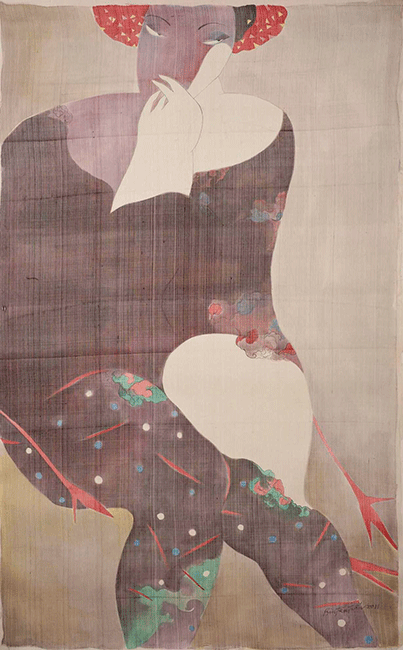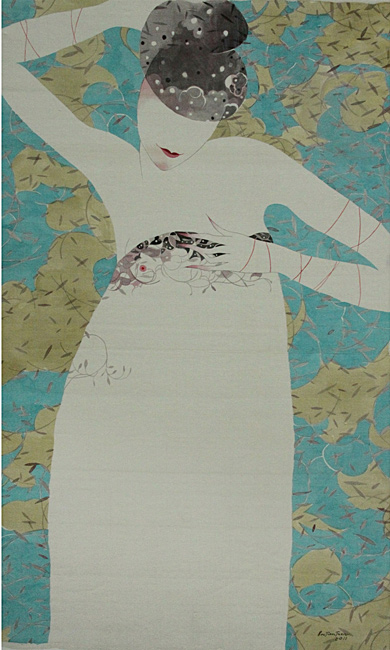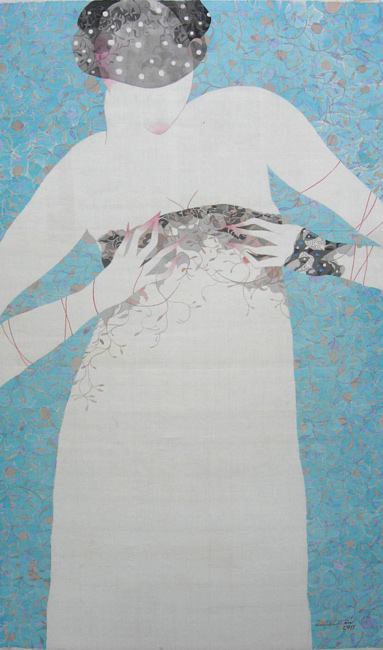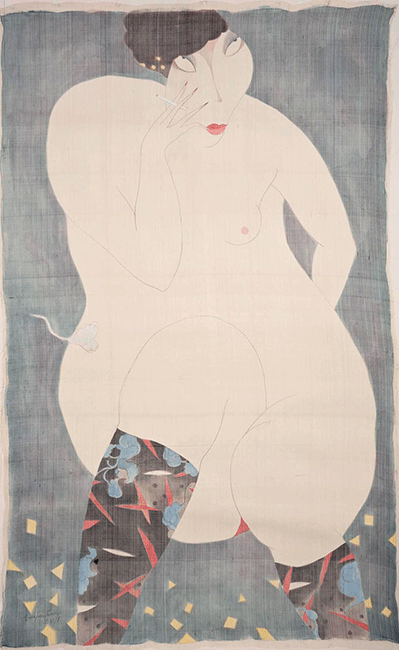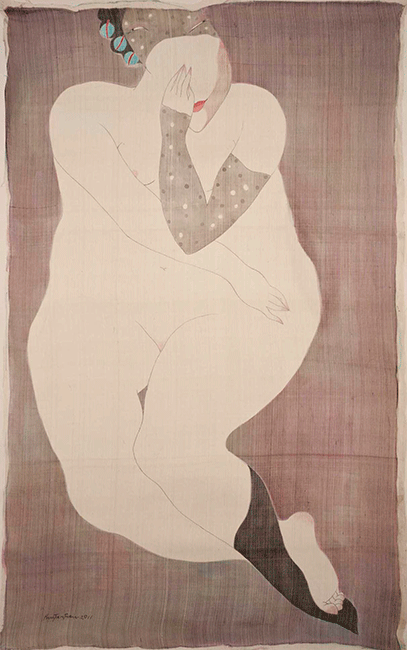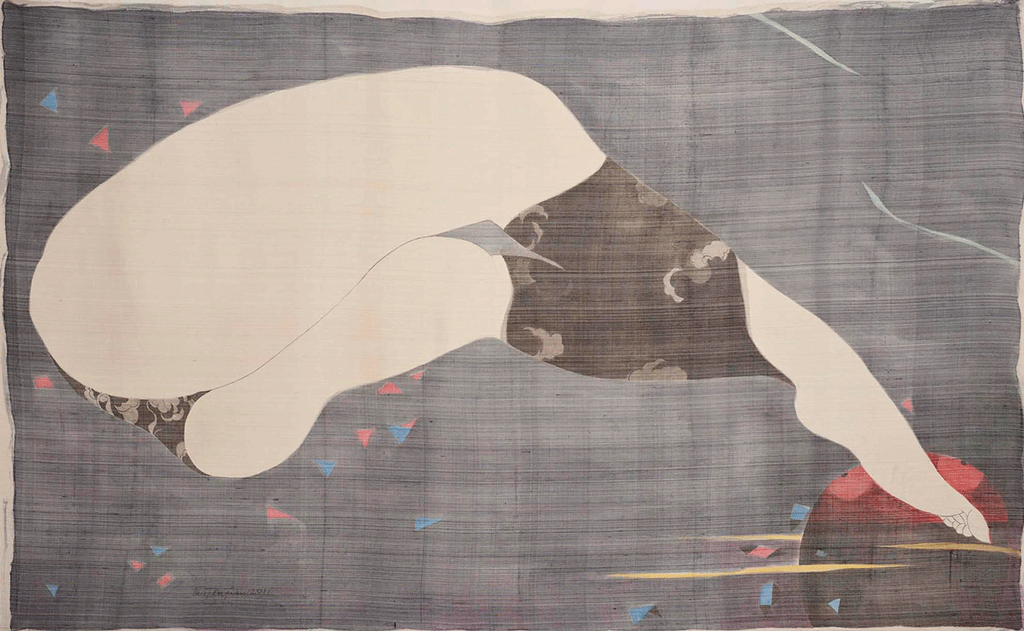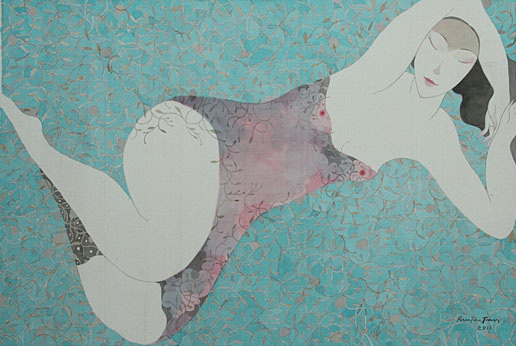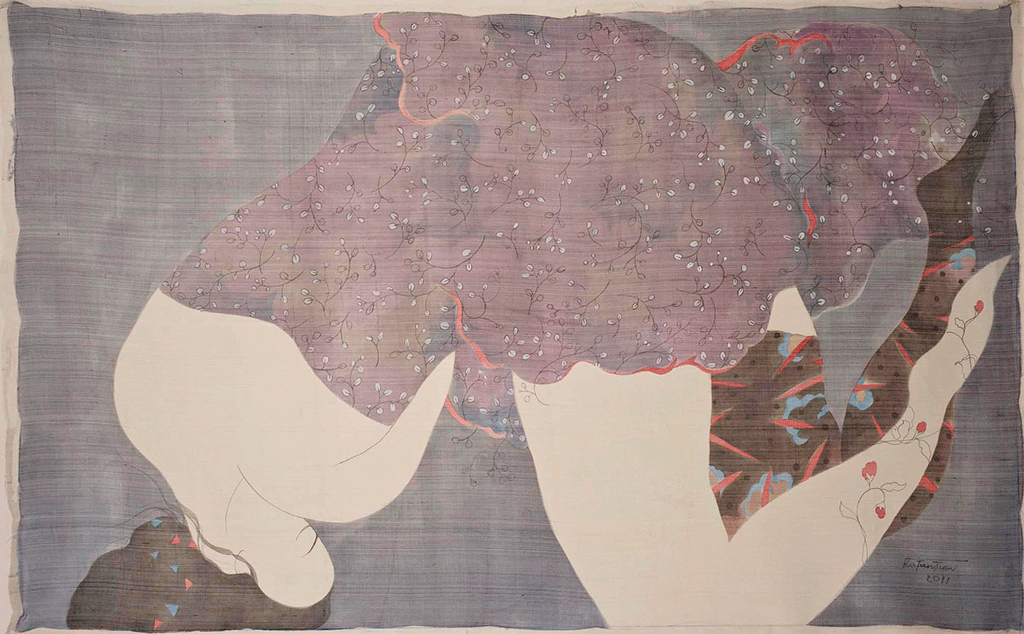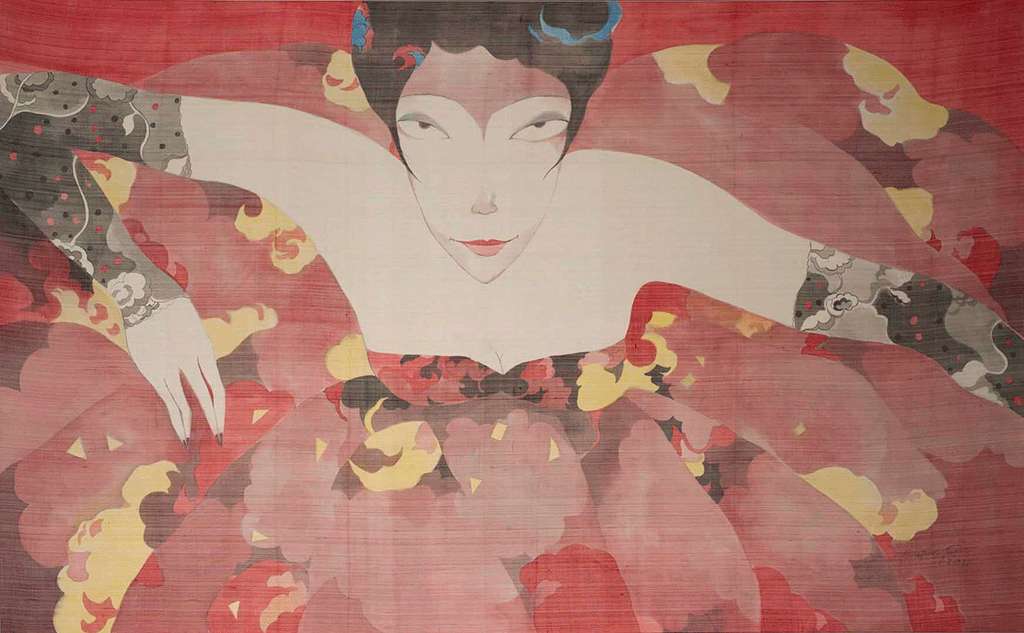Frivolity
Opening Reception: 8 Sep 2011, 6:00 - 9:00 pm
8 - 25 Sep 2011
One of the negative sides of development is the propensity for a societyâs treasured cultural traditions and customs to be diluted and even abandoned in the headlong rush to embrace the new, the modern. This phenomenon often manifests in the arts where new ways of thinking often engender a re-evaluation of traditional forms of artistic expression. Contemporary artists in these changing societies encounter potent incentives to embrace the dominant (read Western) contemporary art forms and to eschew traditional mediums that…
One of the negative sides of development is the propensity for a societyâs treasured cultural traditions and customs to be diluted and even abandoned in the headlong rush to embrace the new, the modern. This phenomenon often manifests in the arts where new ways of thinking often engender a re-evaluation of traditional forms of artistic expression. Contemporary artists in these changing societies encounter potent incentives to embrace the dominant (read Western) contemporary art forms and to eschew traditional mediums that…
One of the negative sides of development is the propensity for a society’s treasured cultural traditions and customs to be diluted and even abandoned in the headlong rush to embrace the new, the modern. This phenomenon often manifests in the arts where new ways of thinking often engender a re-evaluation of traditional forms of artistic expression. Contemporary artists in these changing societies encounter potent incentives to embrace the dominant (read Western) contemporary art forms and to eschew traditional mediums that lack obvious mass-market appeal.
With a history that dates back centuries, Vietnamese silk painting enjoyed its “golden age” during the relatively short existence of the colonial Ecole des Beaux Arts d’Indochine (1925 – 1945). During this time, artists like Nguyen Phan Chanh (1892 – 1984) transformed what had been regarded as simply an indigenous craft form into an internationally recognized medium of fine art, winning prizes at the Paris Salon of 1946. This heyday was short-lived, however, and in the succeeding decades Vietnamese silk painting has in large part returned to its essentially decorative roots.
After studying silk painting at the Ho Chi Minh City Fine Arts University, Bui Tien Tuan spent ten years after his graduation working primarily with oils on canvas – a medium considered by the prevailing orthodoxy as more modern and commercially viable. Tuan’s decision several years ago to return to painting on silk sprang from his love of the medium and his sense that it was starting to fade into a solely decorative form focused on mass-produced pieces. Tuan wished to preserve what he regarded as an important part of Vietnam’s cultural heritage and to play a part in its transition into a form that could once again be regarded on an equal footing with other contemporary art styles.
Portraying mainly idealized rural landscapes, village life, pagodas and historical events, there is an inherently conservative and homogenous character to much of traditional Vietnamese silk painting. In his Phu Phiem series, Tuan introduces a more contemporary language of expression to the medium through an evolution of subject matter and the introduction of a vibrant new color palette. In the artist’s words: “The way that I am different from other artists is the way that I look at color, the way I dye the silk, and the modern urban quality of Saigon that comes into my paintings.”
Tuan’s choice to represent women in the paintings of his Phu Phiem series has a strict affinity to the medium. Silk has a delicacy that is feminine in essence and in Tuan’s view the female form comes to life through silk; it is perceived through the thin veil of silk as mysterious, sensual, transparent. Tuan’s women are mostly portrayed nude with the skin not painted or colored but left without tincture, emphasizing Tuan’s belief in the intimate and symbiotic relationship between silk and skin.
Tuan professes an admiration for the Japanese artistic sensibility and his work can at times be seen as influenced by the ukiyo-e genre of Japanese woodblock prints of the 17th – 20th centuries. Literally translated into English as “floating world,” ukiyo-e refers to a conception of an evanescent plane, impermanent, of fleeting entertainments divorced from the responsibilities of the mundane, everyday world. Like the courtesans and geishas of the ukiyo-e, Tuan’s women are placed in what he calls “noi phu phiem” (places of frivolity) where they can proudly flaunt their beauty, their fashion, their naked form. In paintings like Dreamy and Dreamy 2 they live in a land devoid of time and space, existing in a world apart.
Many of the paintings in the Phu Phiem series evoke the Art Nouveau poster art of the 1890’s, also influenced by ukiyo-e, produced by devotees of Japanisme such as Henri de Toulouse-Lautrec. Paintings like Smooth as Silk call to mind a Toulouse-Lautrec styled world of burlesque dancers in vivacious colors and can can dancers with their legs spilling enticingly out of their multi-layered skirts.
The Phu Phiem paintings are in many cases festooned with scattered confetti that confers a festive carnival feel to the boudoir-like depictions, reinforcing the reference to the “noi phu phiem” ambience. The monochrome backgrounds set the subjects off as if they were floating in space. Tuan’s women are attractive, sensual, mysterious. They could be anyone we want them to be, anywhere we desire them to be. They become a part of our fantasy, a door into Bui Tien Tuan’s world.
Tuan was born in the city of Hoi An in Quang Nam Province in 1971, and currently resides in Ho Chi Minh City. Tuan is a 1998 graduate of the Ho Chi Minh City Fine Arts University where he now works as a lecturer. Phu Phiem is Tuan’s second solo exhibition of silk paintings in Vietnam.
Craig Thomas and Xuan Mai Ardia
Read more
Read less






